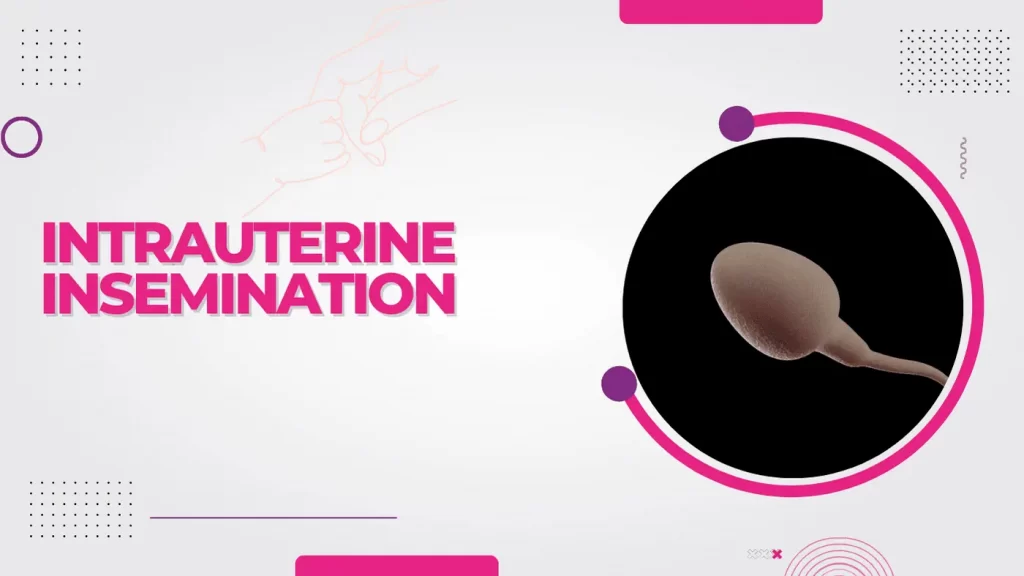
Intrauterine insemination (IUI) is a type of artificial insemination procedure for treating infertility. Sperm that have been washed and concentrated are placed directly in your uterus around the time of ovulation in order to increase the chances of fertilization, thereby increasing the chances of pregnancy. Depending on the causes for infertility, IUI can be coordinated with your normal cycle or with fertility medications.
Indications:
Donor sperm
For women who need to use donor sperm to get pregnant, IUI is most commonly used to achieve pregnancy. Frozen donor sperm specimens are obtained from certified labs and thawed before the IUI procedure.
Unexplained infertility
IUI is often performed as a first treatment for unexplained infertility along with ovulation-inducing medications.
Endometriosis-related infertility
For infertility related to endometriosis, using medications to obtain a good-quality egg along with performing IUI is often the first treatment approach.
Mild male factor infertility (subfertility)
Your partner’s semen analysis, one of the first steps in the medical assessment of infertility, may show below-average sperm concentration, weak movement (motility) of sperm, or abnormalities in sperm size and shape (morphology). IUI can overcome some of these problems because preparing sperm for the procedure helps separate highly motile, normal sperm from those of lower quality.
Cervical factor infertility.
Your cervix, at the lower end of the uterus, provides the opening between your vagina and uterus. Mucus produced by the cervix around the time of ovulation provides an ideal environment for sperm to travel from your vagina to the fallopian tubes. But, if your cervical mucus is too thick, it may impede the sperm’s journey. The cervix itself may also prevent sperm from reaching the egg. Scarring, such as that caused by a biopsy or other procedures, can cause the cervix to thicken. IUI bypasses your cervix, depositing sperm directly into your uterus and increasing the number of sperm available to meet the awaiting egg.
Ovulatory factor infertility
IUI may also be performed for women who have infertility caused by problems with ovulation, including an absence of ovulation or a reduced number of eggs.
HIV discordant couple:
IUI is done to avoid transmission of infection from one partner to other which can happen during natural sexual contact.
Steps Of IUI Procedure
Ovulation Induction and follicular monitoring:
Ovulation will be induced by ovulogens or gonadotrophin injections and serial ultrasound scans are done to monitor egg growth. Once the egg reaches adequate size, medications like HCG injection are administered to induce ovulation at the desired time.
Documentation of ovulation:
Ovulation can be documented about 36 – 38 hours after HCG injection by ultrasound. It is at this time IUI should be ideally performed.
Semen processing:
Your partner’s semen sample is collected at hospital premises, processed by swim up or DG method depending on the quality of semen aimed at increasing the concentration and motility of sperms.
Intrauterine insemination:
The processed semen sample would be inseminated into uterus with full bladder under ultrasound guidance. You will be allowed to rest for some time and prescribed progesterone supports. You can take the pregnancy test after two weeks to know the outcome of IUI.
Intrauterine insemination is a relatively simple and safe procedure, and the risk of serious complications is low. Risks include:
- Infection. There’s a slight risk of developing an infection as a result of the procedure.
- Spotting. Sometimes the process of placing the catheter in the uterus causes a small amount of vaginal bleeding. This doesn’t usually have an effect on the chance of pregnancy.
- Multiple pregnancy. IUI itself isn’t associated with an increased risk of a multiple pregnancy — twins, triplets or more. But, when coordinated with ovulation-inducing medications, the risk of a multiple pregnancy increases significantly. A multiple pregnancy has higher risks than a single pregnancy does, including early labor and low birth weight.